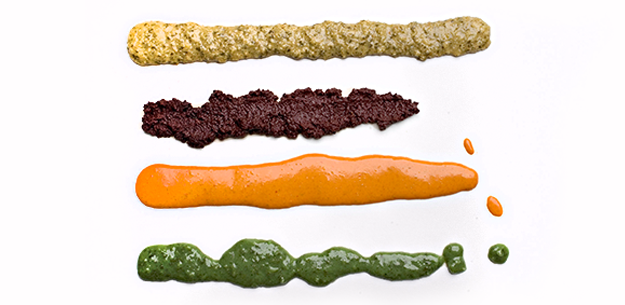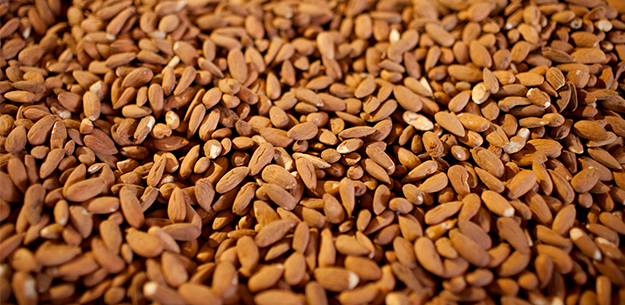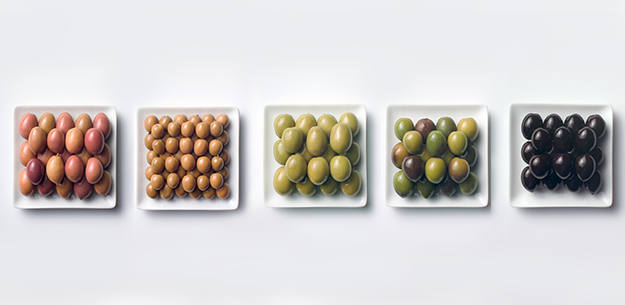.png.transform/rendition-xs/image_image%20(1).png)
Olives, Sauces & nuts
The Spanish table olive sector offers olives in a variety of trade presentations – stoned, stuffed, halved or quartered and seasoned, among others. The latter are olives that have been brined with other ingredients, such as peppers, capers, gherkins, pickled onions, herbs and spices. Have you ever tasted tradiitonal Spanish sauces such as alioli or romesco? What about our wide range of healthy and flavorful nuts and dried fruits?
TABLE OLIVES
Over 300 million olive trees grow in Spain, making it the world’s leading producer and exporter of olive oil and table olives.
The fruit of the olive tree is a drupe but, unlike other stone fruits, the sugar content is very low and the flavor very bitter. This means that olives cannot be eaten raw. In order to make them edible and to preserve them, they are processed in different ways depending on the variety, their ripeness and the traditions and customs of the different areas where they are made.
Table olives can be made from green or black olives, or any of the intermediate colors of the fruits as they ripen. In Spain, the usual method is to use green olives picked before they are fully ripe and pickle them using the Spanish or Sevilian method.
In order to remove the bitter substance known as oleuropein, green olives are submerged in a lye solution at a constant temperature. They are then washed and placed in brine (with approximately 9% salt), where lactic fermentation takes place. The duration of the process depends on the variety. They are then selected, sorted by size, and sent for the different commercial preparations – stoning, stuffing, slicing, etc.
Another method involves curing the olives in brine. This is done by placing the olives directly into salted water where the bitterness disappears and fermentation take place. Finally, a third, more unusual method is that of dehydration. The olives are placed in salt to extract the juices, leaving the olives with a salty flavor and wrinkled appearance.
Since ancient times, certain varieties of olives have always been used for oil extraction while others are used as table olives. The table varieties generally need to be of fair size, preferably spherical, with a high pulp-to-stone ratio. They must be easy to stone and must have a thin, elastic skin. Finally, high sugar content is beneficial as it facilitates fermentation, while low oil content improves keeping qualities and yields firm fruits.
The best varieties for table olives are Manzanilla de Sevilla, which is a fleshy olive with a fine texture, spherical shape and medium size; and the famous Gordal olives, which have a very low oil content and are larger than most. Of the many ways in which green olives are industrially processed and presented, stoned olives stuffed with anchovies, pepper or almonds tend to be among the most popular.
The Hojiblanca variety, characteristic of Andalusia, is a dual-purpose olive, which can be used both for making oil and as table olives. The Manzanilla Cacereña variety is grown in the provinces of Cáceres (Extremadura) and, to a lesser extent, in Salamanca (Castile-León). It is used to make delicious, seasoned black olives. Another dual-purpose variety that mostly reaches consumers as black olives is the Empeltre, from Aragón.
The Spanish table olive sector offers olives in a variety of trade presentations – stoned, stuffed, halved or quartered and seasoned, among others. The latter are olives that have been brined with other ingredients, such as peppers, capers, gherkins, pickled onions, herbs and spices.
Pickles
Pickles are products that have been acidified, generally in vinegar. These include capers, the closed flower buds of the Capparis spinosa, and caperberries, which are the fruits of the same caper plant picked two months later.
The famous Protected Geographical Indication (PGI) Berenjenas de Almagro eggplants from Ciudad Real are first cooked, then fermented in a rich dressing of vinegar, oil, cumin, garlic and pimentón.
The chili peppers, or guindillas, from Ibarra, a town in the Basque Country, are preserved in wine vinegar. Long and pointed, they have a mild and slightly peppery flavor.
SAUCES
Whether hot or cold, sweet, sour or spicy, thin or thick, sauces have always been an important vehicle for creativity, or the expression of popular savoir-faire.
One of the most traditional Spanish sauces is alioli, which is typical along the eastern coast of Spain, although it may have originated farther north in Catalonia. This tangy and flavorsome cold cream is made by slowly crushing garlic and olive oil. It is used to accompany rice dishes, fish and meat, among other things. It probably stems back to Roman times and is made in a similar way in other parts of the Mediterranean.
Romesco sauce is probably the most typical of Catalonian sauces. The use of bread, garlic, almonds or hazelnuts, olive oil and vinegar testifies to its Mediterranean origins. The later inclusion of tomato and dried peppers turned it into the sauce we know today.
Mojo sauces come from the Canary Islands. Made with garlic and oil, green mojo also contains green pepper, coriander or parsley, and the often-spicy red mojo is generally made with native red Palmera peppers or pimentón.
The sauces made by Basque chefs to accompany salt cod, such as pil pil or salsa vizcaína are in a class of their own. Other, more traditional sauces include a green sauce based on garlic and parsley, a range of tomato sauces, yellow sauce with saffron, and pine nut or hazelnut sauce.
NUTS
Spain is the world’s second largest producer of almonds after the US. The most important Spanish native varieties include Planeta, Largueta – which are very good toasted – and, particularly, Marcona, with its smooth taste, juiciness and strong flavor. Considered one of the world's best, the latter is frequently used in patisserie.
Like almonds, hazelnuts are grown along the Mediterranean coast. The Negreta hazelnuts from Tarragona have Protected Denomination of Origin (PDO) Avellana de Reus status.
Some native varieties of walnuts are grown in Spain, but in recent years Californian varieties have been planted because of their larger fruits.
Castilian pine nuts, especially those from Valladolid (Castile-León) are generally considered to be Spain’s best. They are often dried in the sun to improve and intensify their flavor. Pine nuts are considered a delicacy and fetch one of the highest prices for nuts.
Although chestnuts are technically nuts, they are farinaceous like acorns. For centuries, chestnuts were a staple for the inhabitants of the rainy, mountainous parts of northern Spain where it was not possible to grow cereals. The best-known are those from Galicia.
DRIED FRUIT
The most select raisins in Spain are undoubtedly those from the Axarquía and Manilva districts of Málaga (Andalusia). These come from the wonderfully sweet Muscatel variety, which dates back to Roman times.
In the southeastern province of Alicante, the Elche palm grove, Palmeral de Elche, is the legacy of date palms planted by the Arabs between the 10th and 12th centuries. Today, as Europe’s largest palm grove, it has been declared a World Heritage site by UNESCO.
Most Spanish figs are grown in the province of Cáceres (Extremadura). Especially renowned are those from Almoharín, where they are not only dried but also used to make candies and chocolates.
The Spanish table olive sector offers olives in a variety of trade presentations – stoned, stuffed, halved or quartered and seasoned, among others. The latter are olives that have been brined with other ingredients, such as peppers, capers, gherkins, pickled onions, herbs and spices.
Santiago Botas/@ICEX. Edited by Adrienne Smith/@ICEX



- Spanish sauces
- Spanish nuts
- Spanish nuts

